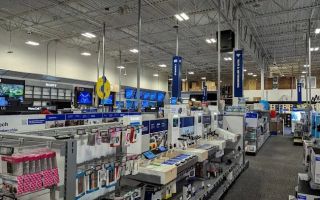How Computer Repair Shops Check and Verify Repairs: The Complete Guide
- 1. Initial Diagnosis and Problem Identification
- 2. Detailed Repair Process: What Happens Inside the Shop?
- 3. Post-Repair Quality Checks
- 4. Customer Communication and Final Verification
1. Initial Diagnosis and Problem Identification
When you drop your computer off at a repair shop, the first step is a thorough diagnostic process. The technician runs initial tests to identify the problem, whether it's a software issue, hardware malfunction, or something else. This diagnosis is crucial as it helps the technician narrow down the potential causes. For example, if your computer is slow, the technician might run a system scan for viruses, check for disk errors, or look at system resources to identify underlying problems.
2. Detailed Repair Process: What Happens Inside the Shop?
Once the diagnosis is complete, the repair process begins. The computer repair shop typically separates its tasks into different stages. For software issues, this may involve reinstalling the operating system, updating drivers, or running troubleshooting software. For hardware issues, it could involve replacing faulty components like the hard drive, RAM, or even the motherboard. Technicians must also test each replacement part to ensure it functions correctly. Often, this includes using specialized diagnostic tools that evaluate the computer’s overall performance.
Here’s an example: Imagine a customer brings in a laptop with a broken screen. The technician first runs a diagnostics test to ensure that no underlying motherboard issues exist, then orders a compatible screen replacement. After installation, they run additional tests to verify that the display works properly, and the laptop is performing at optimal levels.
3. Post-Repair Quality Checks
After the repair is complete, it’s time for a comprehensive series of quality checks. This phase ensures that everything is functioning as expected. Technicians will often run stress tests on hardware, check for overheating, and verify that all software updates are applied. For example, after fixing a broken charging port, they might check the battery’s charging rate and inspect the power management system to ensure the repair is long-lasting.
A key part of post-repair checks also includes testing the computer’s overall functionality. For instance, if a laptop had a performance issue due to insufficient RAM, the technician would check whether the new RAM solves the performance issue. This final check ensures that the repair meets the required standards and that the customer is receiving a fully functional machine.
4. Customer Communication and Final Verification
Once the repair is confirmed, communication with the customer is essential. A professional repair shop should contact you with an update on the repair status, any additional findings, and the final cost. They may even offer suggestions for preventing future problems, such as installing antivirus software or upgrading specific components.
Additionally, before the customer picks up the device, the technician might give a quick rundown of what was repaired and what has been tested to ensure everything works. This not only helps build trust with the customer but also reduces the risk of misunderstandings regarding the work completed.
For example, a customer might come in with a slow laptop due to malware. The technician not only cleans up the malware but also updates the operating system, cleans up junk files, and installs system optimizations. The technician will inform the customer about what was done and encourage regular system checks to maintain performance.
Understanding how computer repair shops check and verify repairs is crucial when choosing where to trust your device. The thorough diagnostic process, detailed repair steps, and post-repair quality checks ensure that the work done on your computer is of high quality. If you're looking for trusted computer repair services, be sure to visit Computer Repair for more information and expert services.




























